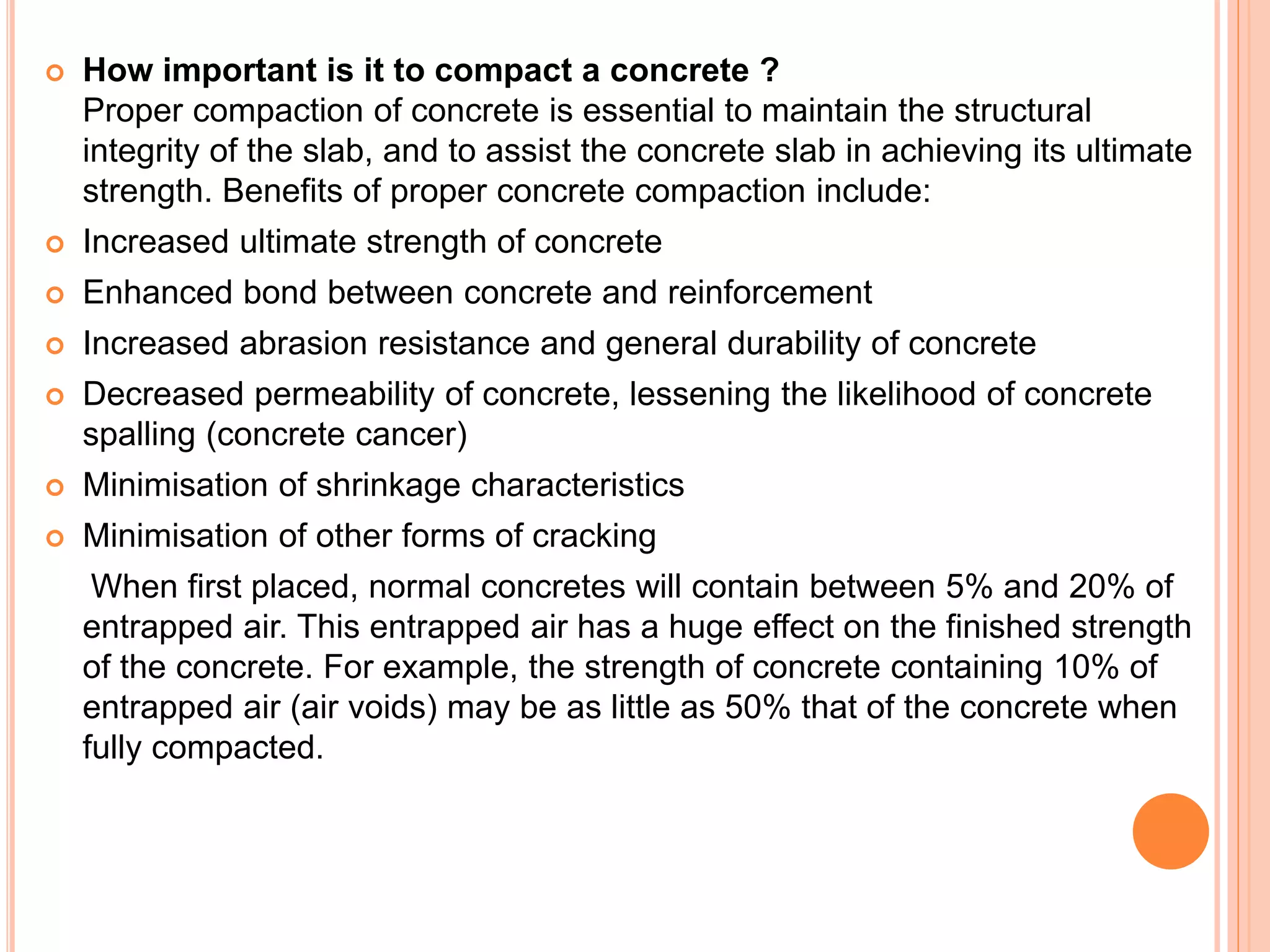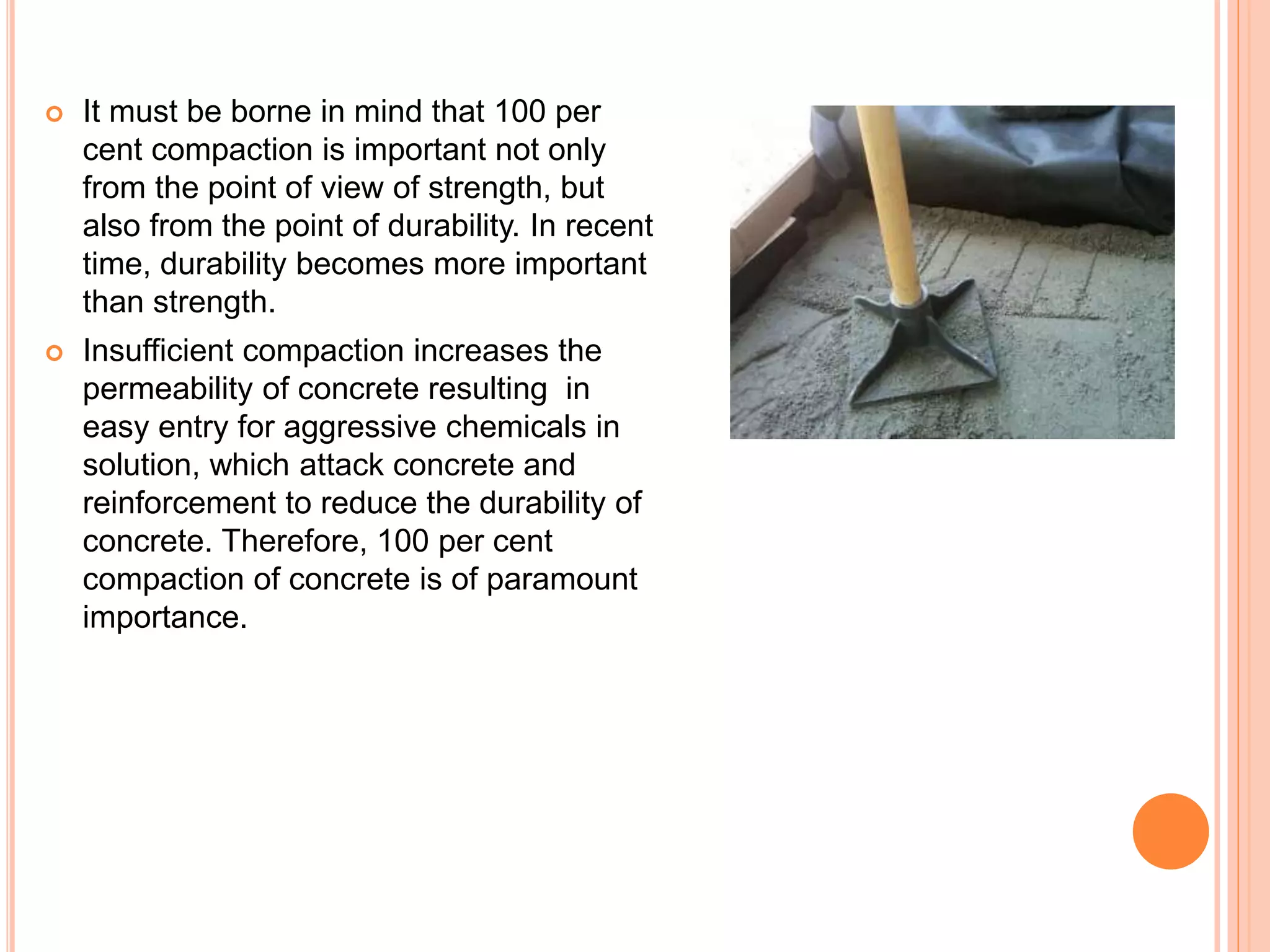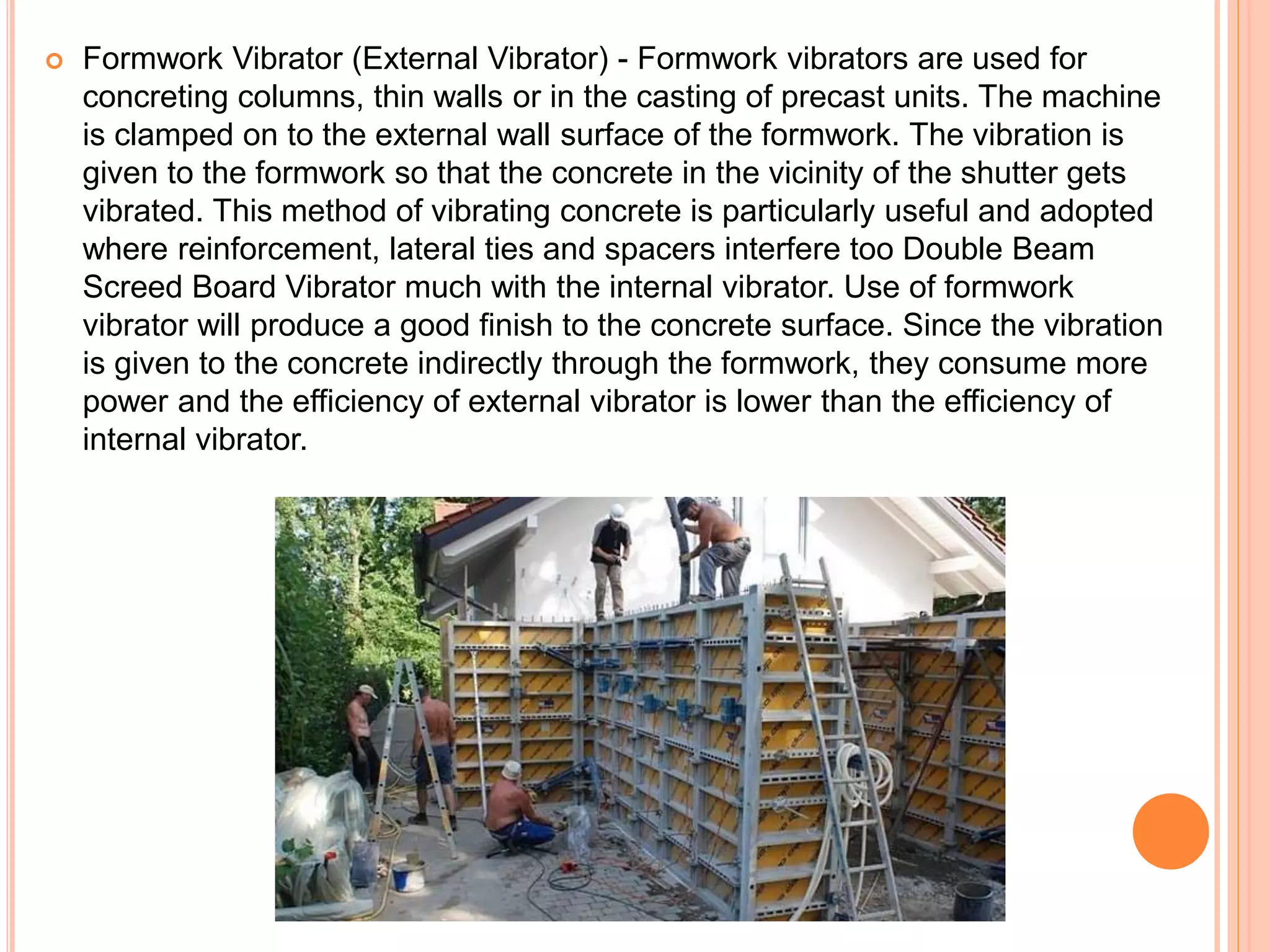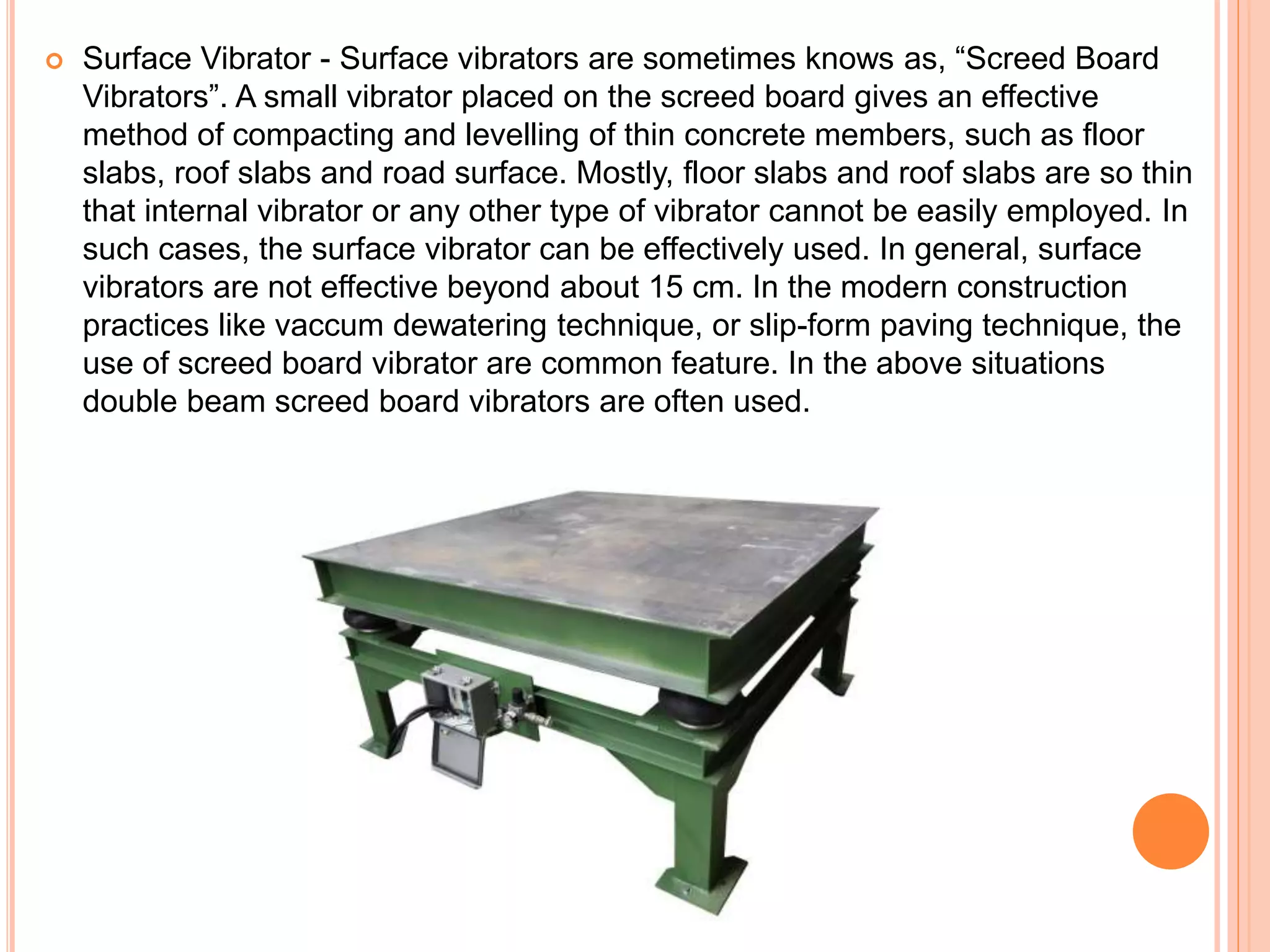The document discusses two methods of compacting concrete - hand compaction and compaction using vibration. Hand compaction involves rodding, ramming, or tamping and is used for ordinary structures with workable concrete mixes. Compaction using vibration allows for stiffer concrete mixes with lower water-cement ratios, increasing strength. Internal vibrators are most commonly used to vibrate freshly placed concrete and remove air pockets. Other vibrator types include formwork vibrators, table vibrators, and platform vibrators. Proper compaction is important to maximize concrete strength and durability by minimizing voids.
















